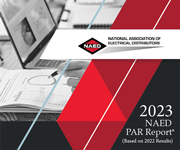MONTPELIER, VT – Vermont is on track to become the first state in the nation to ban the sale of compact fluorescent lamps (CFLs) after the lighting industry conceded to state officials that better, mercury-free alternatives are now widely available. Attention now turns to the wide variety of other mercury-containing fluorescent lighting still being sold for residential and commercial use that experts say should also be phased out and replaced by more energy-efficient, mercury-free LED lighting.
“Today, we no longer need to tolerate fluorescent lighting, which contains mercury, a potent neurotoxin,” said Michael Bender, Director of the Mercury Policy Project. “Once again, Vermont is taking the lead in phasing out toxic products now that safer and more energy-efficient alternatives are widely available and affordable across Vermont.”
In an October letter to the Vermont Department of Environmental Conservation (DEC), the Vermont Public Interest Research Group (VPIRG) cited the wide availability of mercury-free light emitting diode (LED) technology in petitioning for an end to the sale of mercury-containing fluorescent lighting. Under existing Vermont law, fluorescent lamps can only be sold until a mercury-free alternative is available that provides the same performance at an equal or lower cost.
“Vermont policymakers have long-recognized the threat to public health and our environment posed by mercury-containing products,” said Paul Burns, executive director of VPIRG. “State law provides a roadmap for eliminating mercury light bulbs and other mercury lighting products once safer alternatives become available. Thanks to widely available LED technology, that day is here. It’s time to finally pull the plug on risky and costly mercury lamps in Vermont.”
In responding to VPIRG’s petition, DEC officials sought input from the National Electrical Manufacturers Association (NEMA) that represents industry and lighting suppliers. NEMA conceded that non-mercury alternatives to CFLs are “readily available” and are “more efficient” at a comparable price.
While NEMA admitted it can no longer justify selling CFLs in Vermont, the industry group refused to concede that mercury-free LED lamps are also readily available to replace virtually all mercury lighting being sold today. In its response letter, NEMA states that other mercury-containing fluorescent lighting technologies, like tubes, should not be banned. NEMA argues that LED tubes are priced higher and there are “limitations to the compatibility of the LED lamps.”
“I found NEMA’s response to the State of Vermont confusing because it completely contradicts the statements of its own members’ websites,” noted Burns. “Philips, GE Current, Osram-Sylvania and other NEMA members’ product literature touts the ease of retrofitting with LED tubes and the cost-effectiveness when considering how quickly LEDs pay for themselves in energy savings.”
Philips Lighting advertises LED lamps as “simple retrofit solutions with spectacular energy savings,” noting that their portfolio of LED retrofit tubes “enable hassle-free installation for all of your linear application needs.” GE Current states in their catalog, “It’s never been easier to upgrade from linear fluorescents to Current’s LED tubes,” and “Linear Fluorescent lighting is the most prevalent light source among Commercial and Industrial buildings. LED Tube conversions are the perfect fit for any industry.”
Not only are LED replacement lamps widely available, they are also an easy retrofit solution that will save Vermont residents and businesses money year after year.
“We have looked at the retail price of drop-in retrofit LED bulbs at Home Depot in Vermont,” said Brian Fadie of the Appliance Standards Awareness Project. “As one example, we found that users who have instant start fluorescent ballasts can buy a four foot LED retrofit bulb for only 72 cents more than a fluorescent bulb. Since the LED bulb cuts electricity costs in half, those 72 cents are saved on the utility bill in just one month, and the LED bulb then goes on to last for 9 years. In fact, over the lifetime of the LED bulb, it pays for itself more than 20 times over in electricity bill savings. Clearly LED is the lowest cost option in Vermont today.”
The key issue that DEC officials will have to consider is how to interpret “cost” as it is used in the legislation. When arguing to keep selling their mercury-containing fluorescent lamps in Vermont, NEMA interprets “cost” to mean the purchase price of the lamp. However, advocates argue that cost means not just the purchase price, but also the cost of using the product. Therefore, lighting products that use less electricity and last much longer are less costly over their expected life, say advocates.
“Price is not the same as cost from a consumer or small business perspective,” said Ana-Maria Carreño of the Clean Lighting Coalition. “The cost of a light bulb includes both the cost of buying the bulb and the cost of running it in our homes and offices. If the State uses this commonsense definition of cost, fluorescent lighting has already lost across the board. LED have the lowest total cost of ownership in nearly all applications today – that is why the market is already moving away from mercury lighting.
VPIRG and its partners with expertise in efficiency and lighting are urging DEC to ban virtually all mercury lighting products. A preliminary decision by the Department is expected in early 2022.
“At the end of the day, we are fighting for Vermont families and businesses,” said Burns. “Who wants to put toxic mercury lighting in their homes, day care centers, schools, offices, hospitals, or shops when they don’t have to? LED alternatives are available, far more cost-effective, offer better quality light than fluorescents and are mercury-free.”
“To borrow my favorite quote from NEMA member Philips Lighting,” he added, “Real pros say farewell to fluorescent.”
For more information about the transition away from mercury-based lighting, visit https://cleanlightingcoalition.org/benefits/
Link to the Vermont State Law relating to the sale of mercury-containing lamps
Link to a recent study on Health and Mercury Lighting titled “Mercury in Fluorescent Lighting: Unnecessary Health Risks & Actionable Solutions”
Link to the recent NEMA letter to the State of Vermont
About the Appliance Standards Awareness Project (ASAP)
ASAP organizes and leads a broad-based coalition effort that works to advance, win and defend new appliance, equipment and lighting standards which deliver large energy and water savings, monetary savings and environmental benefits. To learn more, visit https://appliance-standards.org.
About the Clean Lighting Coalition
The Clean Lighting Coalition is a global partnership coordinated by CLASP to capture the health and environmental benefits of eliminating mercury-based lighting. To learn more, visit www.cleanlightingcoalition.org and follow the Coalition on Twitter, Facebook, and LinkedIn.
About the Mercury Policy Project
Founded in 1998, the Mercury Policy Project promotes policies to eliminate mercury use and reduce mercury exposure. To learn more, visit www.mercurypolicy.org.
About VPIRG
The Vermont Public Interest Research Group is Vermont’s largest consumer and environmental advocacy organization with more than 40,000 members and supporters across the state. To learn more, visit www.vpirg.org.
Tagged with Clean Lighting Coalition





